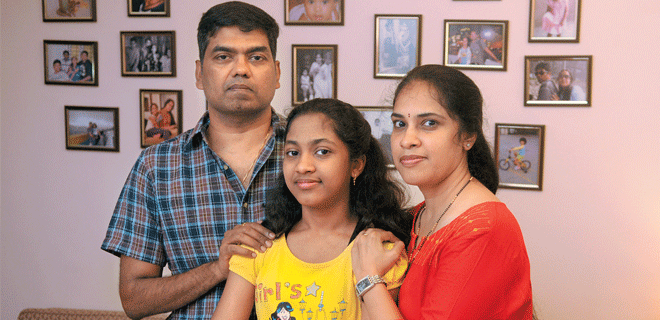Funding your dream home
Benign interest rates and attractive prices- is this the right time to buy that house you have been eyeing?

Just the way there is no right time to start investing; there is no right time to buy a house, especially if you are looking for a house to live in. A house purchase works well if you are planning to live in it, so, your first home purchase should definitely be with the same intention. Ask any financial planner about buying a house on a loan and chances are high they will dissuade you if you plan to buy when you already own a house or are paying EMIs on another house and are planning a second house purchase as an investment.
Yet today, house purchase, especially in the affordable housing segment, breaches many of the otherwise sane advices given in the earlier paragraph. The festive cheer is on us, developers are offering great deals, home loan interest rates are low and there is the tax incentive to first time home buyers, which makes home buying so tempting. The incentives under the Pradhan Mantri Awas Yojana (PMAY) have clearly played a role in price correction in the residential real estate sector. Several new housing projects announced by builders and developers are creating the interest among potential buyers to consider a house purchase owing to these factors.
"The scheme has benefited not just the lower middle class but also the middle class by lowering the cost of buying a property. As the MIG scheme has been extended till March 2019, we expect demand to gain momentum," says Renu Sud Karnad, MD, HDFC. The scheme has come as a boon for Mumbai-based Sudhir Mishra who bought a flat in Boisar in 2015, which cost him Rs 16 lakh under an affordable housing project.
"I took Rs 12.5 lakh loan for the house and was pleased to find that I could save Rs 2.14 lakh as interest subsidy on this flat purchase under the credit-linked subsidy scheme (CLSS) of the PMAY scheme," he grins. He had the choice to reduce the EMI or tenure after this windfall six months ago. In less than two years since he bought the flat, the loan tenure has gone down from 20 to 12 years and if one factors the escalation in the value of the flat, he is definitely a winner. And, there are many more like him who are reaping the benefit of buying a house under the PMAY scheme.
Home within reach
The changing dynamics of home loans have resulted in lenders slashing interest rates across lending segments. Moreover, the specialist lenders who are primarily focusing on the affordable housing section are creating plenty of choices for borrowers. The big beneficiaries of rate cuts are loans in the Rs 30 to Rs 75 lakh segment. Likewise, the coming into effect of Real Estate Regulation Act (RERA) and Goods and Services Tax (GST) has rekindled the interest of buyers looking for a house to live.
Add infrastructure development across several states and the work on the Smart Cities projects are also fuelling several new real estate options for those looking to buy a house. Likewise, several redevelopment initiatives have also been introduced by developers in several parts of existing metros and big towns, which are shaping up under the affordable housing segment.
"The overall demand in housing sector has been impacted in the last one year owing to demonetisation, GST, and RERA. However, with increased buyer and investor confidence, we can now expect higher demand and credit flow to the housing space," says Rajan Pental, group head - retail lending, YES Bank. With home loan interest rates hovering around 8.35-9 per cent, which is the lowest in the past seven years, the signs are promising for those looking for a home to benefit from the prevailing circumstances.
Budget homes
The PMAY encompasses a range of programmes meant to facilitate this objective-redevelopment of slum dwellings with the help of private participation, credit-linked interest subsidy, subsidy to beneficiaries for construction of independent houses and so on. Recently, the Ministry of Housing and Urban Affairs rolled out a series of public-private participation options to boost private entities' interest in the affordable housing segment. "The subsidy scheme coupled with benefits for developers on the construction of affordable housing (100 per cent tax benefits on the profits) will create an extremely positive impact," says Sud Karnad.
CLSS is a key highlight of this plan, as it translates into a direct benefit of Rs 2.3-2.67 lakh for each beneficiary family, depending on whether they fit into the economically weaker or low income group and middle income groups I and II. Those who already own a pucca house or have availed of central assistance earlier do not qualify for the benefits. Moreover, the maximum carpet area of the housing unit to be eligible for the subsidy will be 30 sq m, 60 sq m, 90 sq m, and 110 sq m, respectively.
This is how the CLSS benefit structure works-those with an income of up to Rs 3-6 lakh per annum can avail interest subsidy at the rate of 6.5 per cent on a loan amount of up to Rs 6 lakh. For those drawing an annual income of up to Rs 12 lakh, the subsidy rate is limited to 4 per cent on a loan of up to Rs 9 lakh. Those earning up to Rs 18 lakh annually can claim a subsidy of up to 3 per cent on a loan amount up to Rs 12 lakh.
"Income here refers to the entire family's income, but family as a unit too has been defined. So, an individual who draws an income and lives with his parents will be treated as part of a separate family and hence will be eligible for the scheme," says Kalpesh Dave, head - corporate planning and strategy, Aspire Home Finance. Moreover, there is no cap on the maximum loan-the amount exceeding the PMAY ceilings will have to be serviced at the nonsubsidised rate. The scheme is not available for MIG home-buyers who took home loans before January 1, 2017. This is a reason why several new buyers are looking for options to exercise before the opportunity window closes for them.
Ease of loans
Loans are not only available in the affordable housing segment, normalcy seems to be back even in the regular housing loan segment. "The affordable housing segment is already doing well and the festive period could see rekindling of interest in the premium segment too. Post GST, ready-to-move-in properties have gained favour over under-construction ones," says Sachin Chaudhury, chief operating officer, IndiaBulls Housing Finance.
If government-induced concessions act as the carrot for lowcost housing customers, it is cheaper home loan rates in case of nonPMAY home-seekers. For instance, SBI's housing loan interest rate of 8.35 per cent for salaried women borrowers opting for small-ticket loans of under Rs 30 lakh is the lowest in six years. Presently, interest rate on home loans across banks range from 8.35-9.05 per cent for loans up to Rs 30 lakh to more than Rs 75 lakh, depending on the lender.
Borrowers are also using their credit scores to their advantage in negotiating loan rates. The same data is used by lenders to ascertain the repayment capacity of the borrowers. Says Vaijinath MG, chief general manager - real estate and housing, SBI; "We assess how much out of the X amount the person would be able to pay after taking family requirements into account."
However, the eligibility evaluation process is not cast in stone. "For borrowers closer to retirement, the EMI will be higher when they are employed and reduce once they retire. In case of younger borrowers with a well-paying job, we also consider their future earnings capabilities," he says.
Likewise, not only do lower interest rates make property purchase more affordable, but also ease the burden on existing borrowers' finances. For instance, Mumbai-based Jayadev and Rohini Tiruveaipati are considering early repayment of their home loan which they had taken in 2012. "Though we have availed a 20-year loan, we may repay it within ten years. The reduced rate of interest will help us repay our loan before time."
Borrowers should know that a floating rate loan is linked to interest rate movements in the system, which means that the applicable rate could also move upwards once the cycle turns. Therefore, it makes sense to plan your finances well to manage the EMI outgo without compromising the quality of your routine lifestyle. "It was a little difficult initially as the loan amount was large, as were the EMIs, but we re-worked our household budget and managed it," says Rohini Tiruveaipati.
There are tax benefits borrowers can claim which reduces the actual cost of borrowing. Borrowers can claim tax deduction of up to Rs 1.5 lakh on principal repaid under Section 80C and interest paid of up to Rs 2 lakh under Section 24. The Tiruveaipatis see immense value in the tax relief on loan interest payout. "The limitation is that we can claim deduction to the extent of Rs 2 lakh only, though we pay higher amount," says Rohini. If you need a house to live, the signs are promising for you to make your buying decision now.









